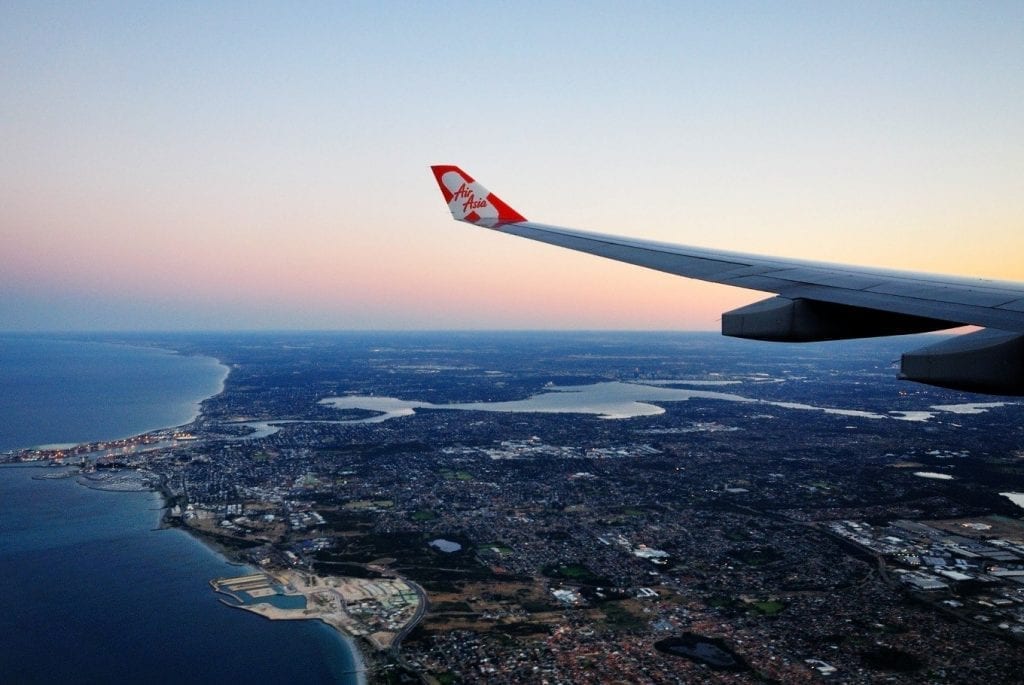
AirAsia has been exemplary in using digital and disruptive technologies in increasing its ancillary income, including the introduction of in-flight Wi-Fi, which is expected to create a US$130 billion global market by 2035, according to London School of Economics research.
AirAsia is the pioneer of low-cost airline in-flight Wi-Fi in the region.
“Currently, we have about slightly over 50% of our aircraft (in Malaysia) Wi-Fi-enabled. We expect AirAsia Wi-Fi to be installed fleetwide in all AirAsia Malaysia in 2020,” chief executive officer Riad Asmat said.
The other AirAsia companies are expected to follow suit, he said.
“Wi-Fi these days is like oxygen. The moment you sit in a place the first thing we ask is if it has Wi-Fi and it is slowly gaining traction in the aviation sector,” he told Bernama when asked on the growing sector.
For the Malaysian operation, the flights are all within the one-to four-hour range.
“Within the AirAsia Wi-Fi ecosystem, the airline has entertainment, we have our e-shop, digital in-flight magazine and some level of entertainment, especially for kids. Besides enhancing the experience of passengers, the service also enables them to connect with their loved ones on air,” said Riad.
“Hooking up to the AirAsia” Wi-Fi ecosystem is free (browsing kids entertainment, e-shop and magazine) but if you want to use your social media or do real work, then you’ve got to pay and I believe our rates are competitive as compared with other airlines around the region,” he said.
A check on the service revealed that the Wi-Fi plans range from RM9 to RM58, with the most basic plan capped at 10MB. There is also a top-of-the-line 200MB plan, which is best for streaming. Riad said more than 30% of its passengers have accessed the AirAsia Wi-Fi services and the figure is expected to hit 50% soon.
Knowing AirAsia, Riad was also quick to point out that incorporating a lot of its services in the AirAsia Wi-Fi ecosystem would also help them cut costs via fuel-saving.
“Once the aircraft is Wi-Fi-enabled the in-flight magazine (hardcopy) should not be there. It is fuel-saving,” he said, adding that although the hardcopy uses some of the lightest paper material available, going 100% digital would save kilos for every fleet.
Hence, Wi-Fi is crucial for AirAsia’s business, he said, noting “it is part and parcel of embracing technology.” Riad, however, said the portion of WiFi contribution now to its overall ancillary income is negligible.
“But the growth potential is phenomenal because once all the aircraft have the service, people start using dependent on the needs of that day. I am sure you can get business out of it, directly and indirectly, especially when passengers browse and make a purchase via OURSHOP,” he said. OURSHOP is AirAsia’s e-commerce platform.
However, for the service to have a bigger impact on its ancillary income, Riad said it has to remain attractive, noting the company is constantly on the lookout for more content providers.
AirAsia currently uses the high-speed Ka-band platform, which claims to provide connectivity beyond basic broadband, supporting real-time video, music streaming and more.
A recent survey by the International Air Transport Association, which represents some 290 airlines comprising 82 percent of global air traffic, revealed that some 53 percent of surveyed passengers found Wi-Fi important to have.
The importance is highest in Africa (71 percent), followed by Latin America (68 percent) and the Middle East (67 percent), with the lowest in Europe (44 percent) and North America (49 percent).
The 2019 Global Passenger Survey was based on 10,877 responses from passengers across 166 countries.
“With the availability of Wi-Fi connectivity continuing to have a direct impact on the overall travel experience, adopting the latest onboard Wi-Fi technology continues to be an effective way for airlines to distinguish their product offering,” said the association.
Besides WiFi, Riad said there is also a huge potential to increase ancillary income through its cargo business Teleport, which is the second-largest cargo airline group in Southeast Asia by capacity after Singapore Airlines Cargo as of July 2019, according to the Centre for Aviation.
“We’re currently utilizing only approximately 15% of the available belly space for cargo, in which approximately 40% of our revenues are generated from connections through our network,” he said.
It delivered approximately RM206 million in revenue in the financial year 2018 and is on track to deliver approximately RM400 million in financial year 2019.
“We have invested in technology, with the goal to deliver the same day as standard anywhere within Southeast Asia. Airports are at the heart of this ability to do so,” he noted.
Riad said AirAsia foresees bigger growth in the small parcel business.

